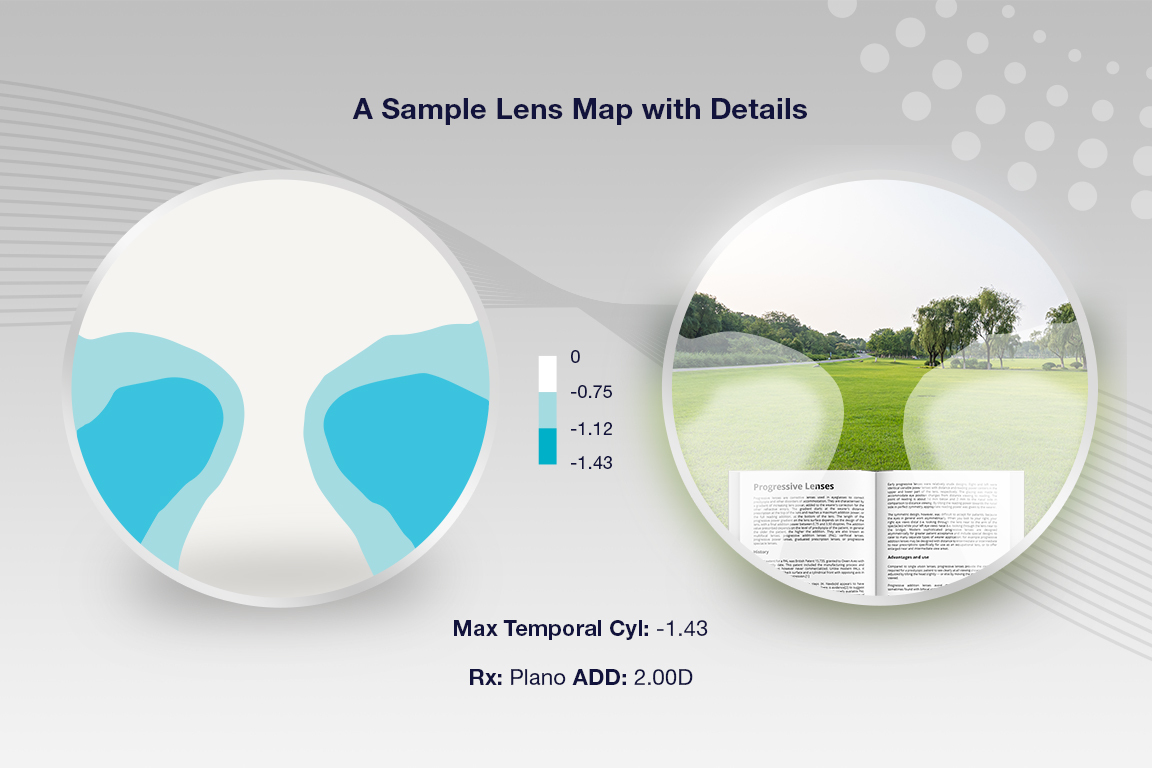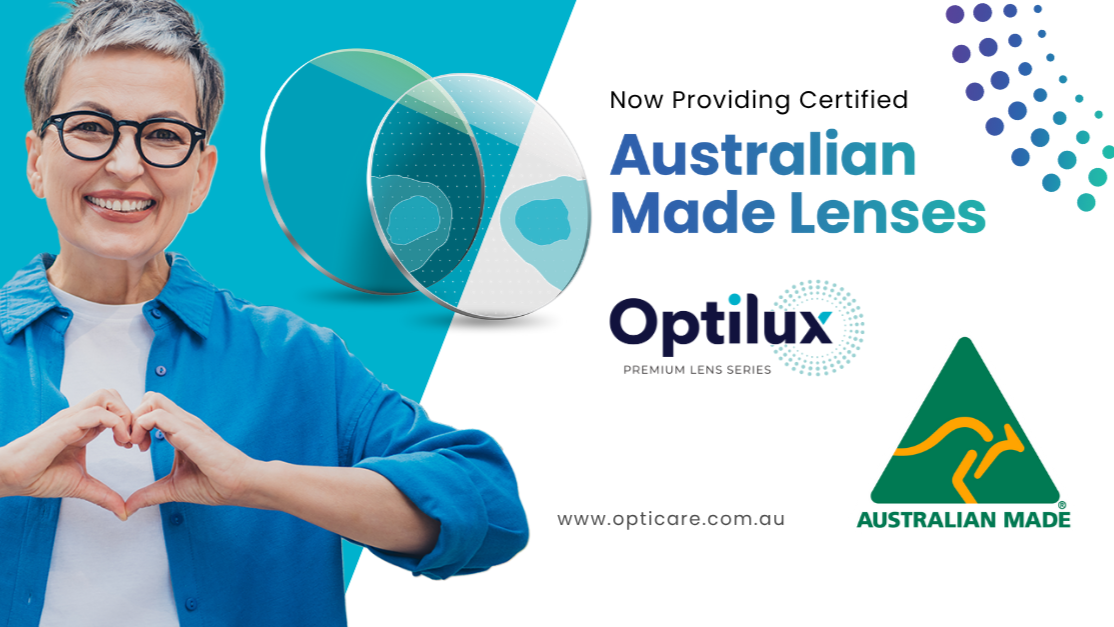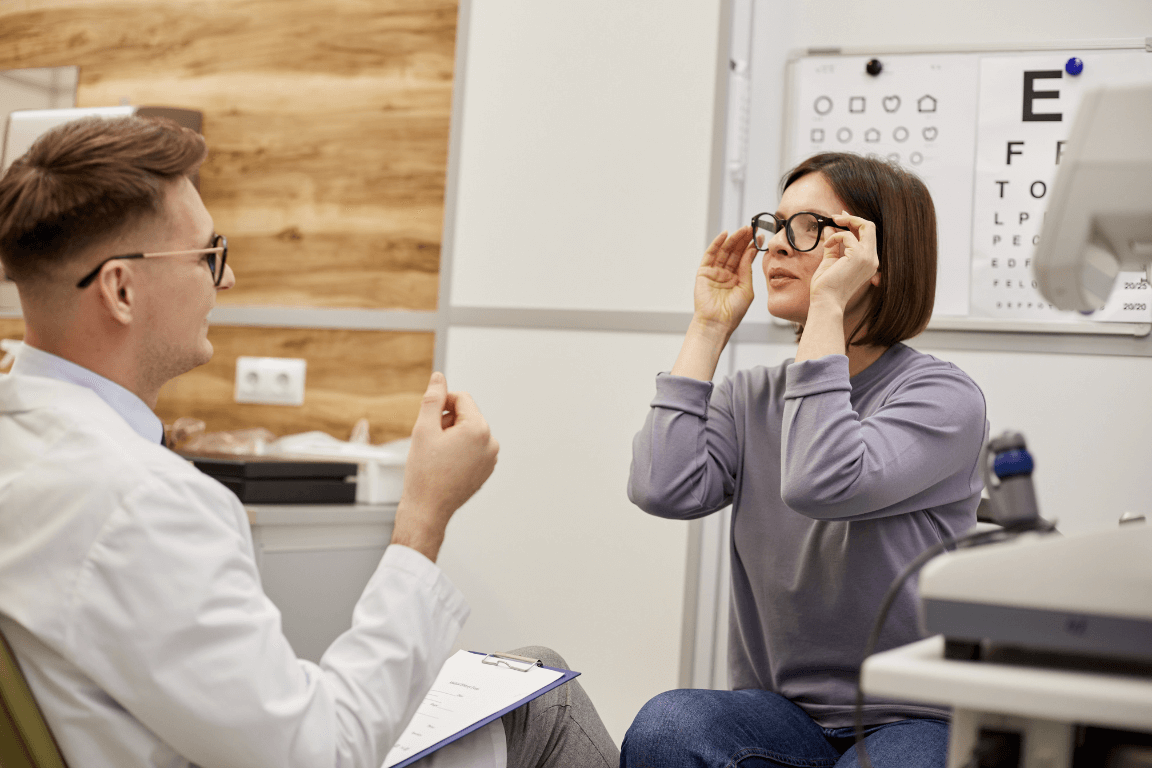Some optical practices may view their presbyopic patients as some of the most challenging to please. Combined with coming to terms that their ageing eyes are no longer cooperating for near work (and never will again), plus the increased costs of suitable optical options, presbyopic patients can be a fiddly bunch. In fact, the claim has been made that eyecare professionals spend most of their time trying to satisfy their progressive wearers compared to any other category of bespectacled patient.1 If this audacious and slightly cheeky statement rings true for your practice, having a better understanding of modern progressive lens design could help save you time and energy by getting it right the first time.
The Design of Progressives
Progressive lenses have come a long way since the introduction of the first commercially successful multifocal – Varilux, in 1959. Breakthroughs in the development of progressives continued through the decades, including horizontal symmetry for improved wearer tolerance and adaptation.2 However, traditional progressive lenses would never be able to account for individual wearer characteristics. Instead, these lenses adopted average fitting parameters, resulting in a degree of compromise for many wearers.3
Then, in the year 2000, came freeform technology, 2 which has permanently changed the game. Optometrists and optical dispensers now have the ability to offer personalised, customised lenses to their presbyopic patients. But with the expanded range of possibilities comes the need to understand a little more about what goes into a progressive lens design and how to make it work in your – and your patients’ – favour.
The unavoidable reality of all progressive lenses, whether budget conventional designs or top-of-the-range fully customised freeform digital, is unwanted astigmatism.1,4 These areas of distortion can be represented in contour maps. Viewing these maps allows opticians to note the location and width of the distance, intermediate, and near zones of a progressive lens, enabling more accurate dispensing and troubleshooting of an underperforming lens. While a traditional vertometer may only provide the optical centre of the distance and near zones, more advanced optical analysers, such as the Visionix VX40 are able to provide a comprehensive lens analysis. Certain labs may also offer a service to assess the precise details of a lens, including Opticare’s Lens Design Analysis.
The benefit of evaluating contour plots lies in understanding what your patient is actually looking through. This graphical representation of the power variation through a lens identifies the outline of the corridor and the shift in optical power from the top to the bottom of the lens. A cylinder map demonstrates the change in curvature of the lens, while the spherical plot shows the distribution of power.4
Though a traditional progressive lens might adhere to set corridor length and distance or near zones as per the standardised design, freeform lenses are much more, well, free. In these situations, reading the lines, so to speak, will give you a fuller picture of your patient’s visual experience through the optics of their lenses.
Personalising, Customising, Optimising
With freeform technology, you can now tailor progressive lenses to your patient’s individual visual requirements. Though distortion and undesirable cylinder are sadly unavoidable, freeform technology allows you to move these aberrations to wherever you like.1 You can, therefore, minimise the discomfort to your patient and improve their adaptation by considering the fitting parameters, biometrics, and the prescription.
However, every optometrist knows that patients are more than just a pair of floating eyeballs with ametropia. Behind those eyeballs are expectations, previous experiences, specific visual demands, and occasionally a binocular vision disorder or two. Successfully fitting a patient into a progressive lens takes into account the complex system that is every patient.
Here are 4 factors to consider when choosing a progressive lens design for your patient.
1. The refractive error
How many optometrists have a myopic patient who spends hundreds of dollars on a pair of multifocal glasses yet consistently removes them for reading? Consider how your patient is likely to wear their glasses. For a -2.00 myope, you may find that the reading portion of their progressives is not going to be the most important aspect, and you can choose a lens design accordingly.
Conversely, presbyopic hyperopes will require their glasses on for comfortable vision at all distances. You may consider fitting a progressive lens a millimetre higher on a hyperope, enabling them to access their plus powers earlier in the lens.
Note that higher add powers are subject to greater amounts of distortion4,5 and smaller reading areas, so a lens design with a shorter corridor may improve reading ability.5
2. Occupation and recreational activities
The way a patient intends to use their progressives will greatly influence priorities in the lens design. For example, a patient who spends much of their time in front of a computer would benefit from a wider reading and intermediate zone, accessed with minimal head adjustments. Good examples are the Optilux Office Near, Optilux Office Flex, and Optilux Office Active freeform lenses. On the other hand, a nature-loving patient who spends their time hiking and birdwatching would be better off with a design like the Optilux Active, with its optimised distance zone.
3. Corridor design
Choosing an appropriate corridor length is important. The shorter the corridor the sooner the Reading Area is activated, thus reducing head and eye movement, and keeping them more natural. Usually, a 7mm corridor is the optimal choice for all-purpose use, with the 9mm being used for outdoor activities. Always ensure the pupil centre is set 3mm more than the manufacturer’s minimum fitting height. Due to improved lens algorithms, short corridors designs are now possible without affecting the unwanted cylinder in the lens.
The pantoscopic tilt angle is another factor to consider when deciding on corridor length. Greater tilt requires a shorter corridor and vice versa for lesser tilts. For optimal optics, the pantoscopic tilt angle should be specified when ordering a freeform progressive lens.
Remember, a corridor can be described as short or long and hard or soft, referring to the power change from distance to near. Short and hard corridors sound undesirable but still hold an important place in successfully prescribing progressive lenses.
4. Patient’s posture
The recommended head alignment when “dotting up” a pair of progressive lenses is for the patient’s facial plane to be perpendicular to the ground.1,5 However, it’s important to consider the patient’s habitual head posture when specifying the fitting height, as this will have implications for a satisfied or dissatisfied wearer.
Usually, the fitting height can be adjusted to compensate for atypical head postures (that is, tilted forward or backward). Alternatively, the corridor length can also be modified – a shorter corridor compensates for head-forward positions and a longer corridor for heads tilted back.1
Summary
Prescribing and fitting progressive lenses is both a science and an art, finessed over years of experience. Fortunately, significant advancements in progressive lens design and the tools to fit them have been made in the past few decades. By taking advantage of the multitude of progressive lens designs available to you – and making careful considerations in your choice – you can set up your bespectacled presbyopes for success.
References
- Review of Optometry. Understanding Today’s Progressives. https://www.reviewofoptometry.com/. 2021. Available at: https://www.reviewofoptometry.com/article/understanding-todays-progressives. (Accessed January 2024).
- Zeiss. The History of Progressive Lenses. https://www.zeiss.com/. 2020. Available at: https://www.zeiss.com/vision-care/en/newsroom/articles/the-history-of-progressive-lenses.html. (Accessed January 2024).
- Zeiss. Zeiss Individual Progressive Lenses: The Optics of Truly Customised Progressive Lenses. https://www.abdo.org.uk/. 2008. Available at: https://www.abdo.org.uk/wp-content/uploads/2019/12/Darryl-Meister-Freeform-Article-1.pdf.
- Brian Boddy. Progressive Refresher. 2018. Available at: https://www.linkedin.com/pulse/progressive-refresher-brian-boddy/. (Accessed January 2024).





